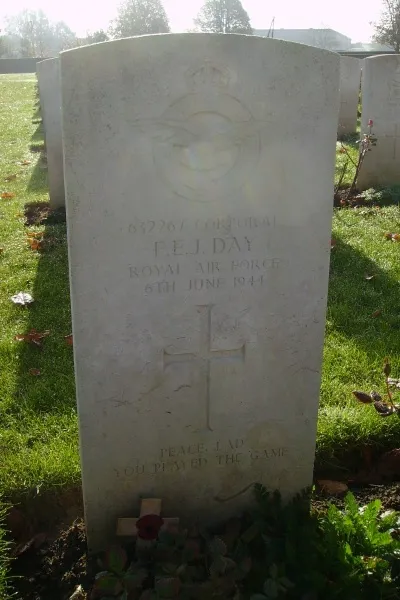Omaha Beach landing of Mobile Signals Unit.
Hi Geoff A Corporal Day 'roomed' (shared civvy billet) with me during the first phase of our technical training at RAF Signals School (civilian college-became poly-now university!). I lost touch with him when he was posted to different School (College-Poly etc) for the second phase. Briefly met him later at Combined Ops "School":- what a misnomer!! From your info it appears he was posted to a T unit. I seem to recall a C unit as a m/f radio receiving unit and a T unit as a m/f Morse transmitting unit. However 'my' Corporal Day had remustered from Electrician (Pay Group2) to a Radar Mechanic (Pay Group 1)(??) Pretty sure it was him though(!) On 25.5.44 that T unit was located with 15082GCI, according to the 2nd TAF Location Statement of that date.The letter suffix indicates (a subject for interesting research!) the operational role fulfilled by the unit which, in turn, determined its 'assets' (to use modern military parlance), i.e., number of bods, their 'trades', quantity and type of operational equipment (vehicular transport, radio transmitter or receiver vehicles (mf vhf), radar array vehicles, mobile operations/control room vehicles, etc, etc). By the way, MSU = Mobile Signals Unit, of which there were perhaps a few hundred of various types, each commanded by a Corporal. These were generally modestly manned. Typically one three-tonner, a 15cwt Bedford Radio vehicle, a motor cycle and two ridge tents to house, say four Wireless Operators, a Despatch Rider, a General Duties bod (who usually shared the cooking) and an MT Driver (to fetch mail and rations). The latter three would set up the tents, field oven and dig the bogs whilst the tech guys set up the aerials and radio equipment (they worked the 24 hour operational shifts). Some of these were attached to larger units GCI's, Group HQ's; but others were in total isolation, say a Q unit for listening to and locating source of enemy transmissions very close to the front line (a story, some time hence perhaps!). The specialist Wireless and Radar Mechanics allotted to 2nd TAF, such as me, were too few for attachment to these small units. So we manned a centrally sited MSSU (Mobile Signals Servicing Unit) available 24/7 for assistance. We had one or two 3-ton Austin Main Workshop vehicles and a few 15 cwt Bedford Servicing Workshops doubling as sleeping quarters (on the benches if you were lucky, otherwise on the roof!!) for a service visit. Wow! It's 2 AM!!! I'm off to bed. G'night

